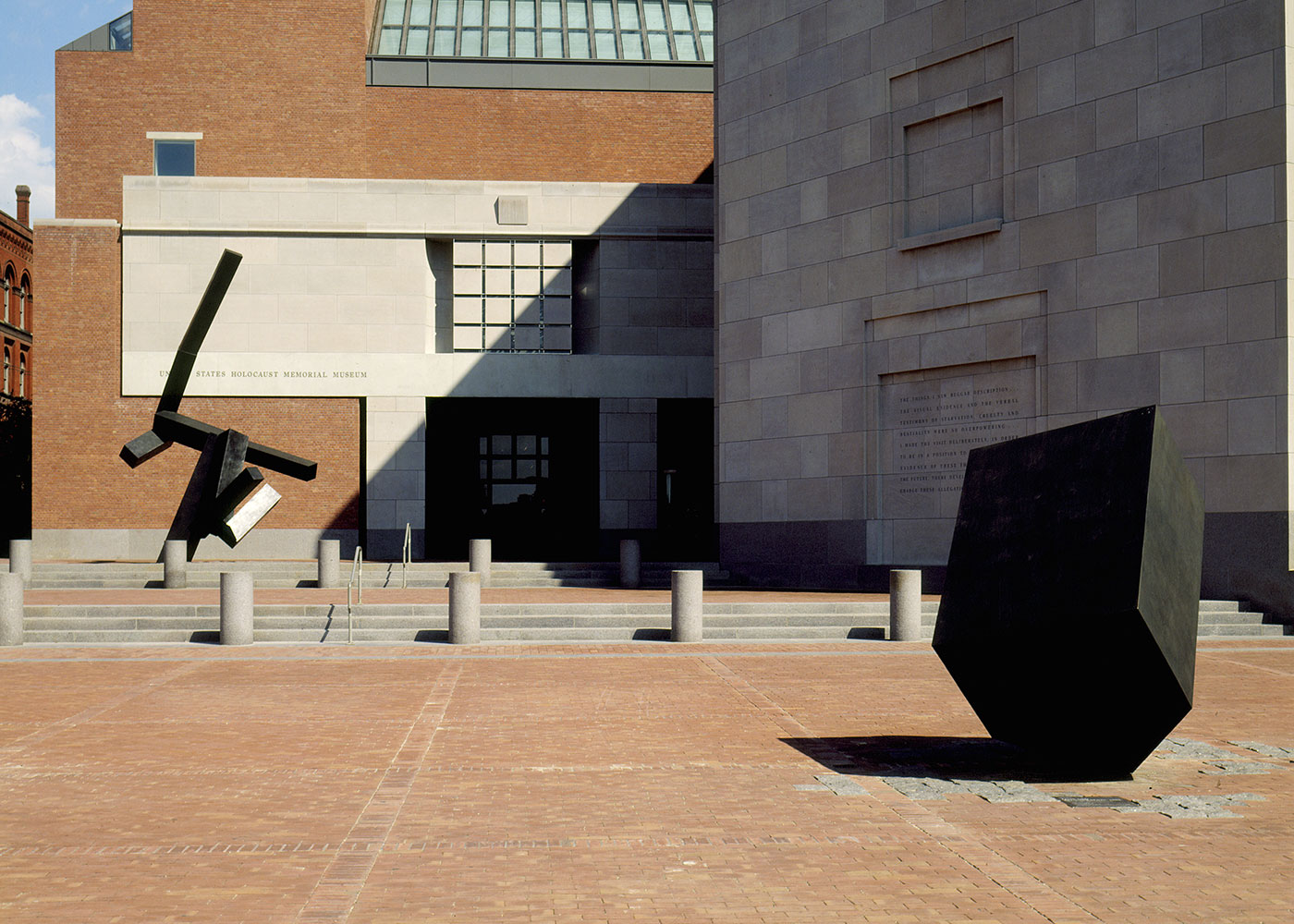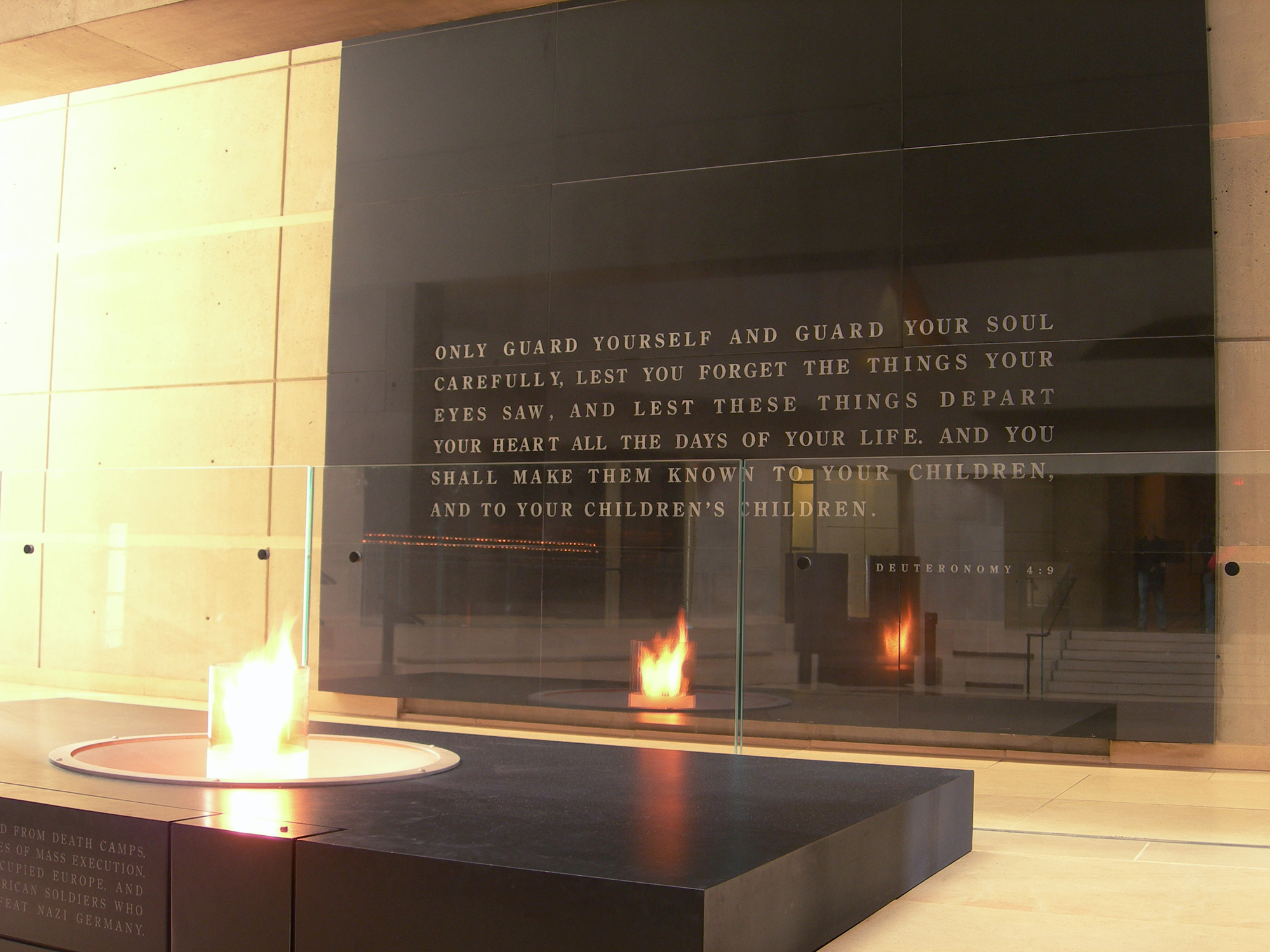Joel Shapiro’s Loss and Regeneration addresses the disintegration of families and the tragedy of lives interrupted by the Holocaust. Situated on the plaza along Raoul Wallenberg Place, the work consists of two bronze elements that engage in symbolic dialogue. The larger piece is a towering, abstract, tree-like form that suggests a figure. Approximately 100 feet away, a smaller, house-like structure is precariously tipped upside down on its roof.
The work memorializes the children who perished during the Holocaust and is accompanied by an excerpt of a poem written by a child in the Terezin ghetto in Czechoslovakia:
Until, after a long, long time,
I’d be well again.
Then I’d like to live
And go back home again.
Shapiro likens the overturned house to the subversion of the universal symbol of security, comfort, and continuity. The larger figure is conceived as an emblem of renewal—of the possibility of a future even after all has been lost.





